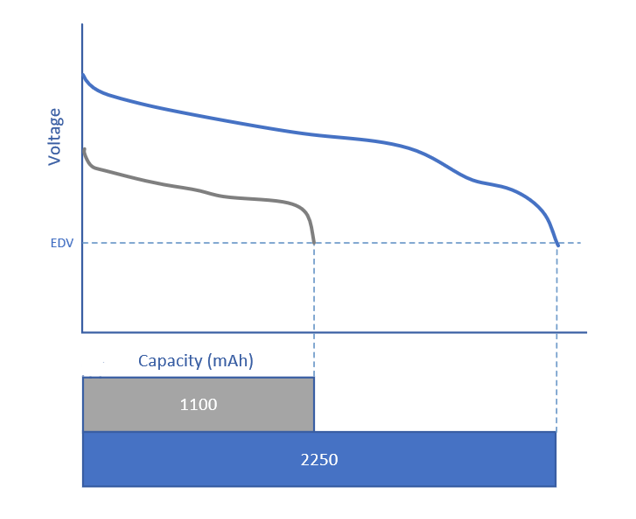SLUAAR3 December 2023 BQ27426 , BQ27427 , BQ27Z561 , BQ27Z746 , BQ28Z610 , BQ34Z100 , BQ40Z50 , BQ40Z80
4 Coulomb Counting
Coulomb counting is a direct measurement of how much electrical charge is leaving or entering the battery. Equation 1 is used for coulomb counting, where the current amount of charge is equal to the starting amount of charge plus the integration of current over time.
The main issue with coulomb counting is knowing what the starting amount of charge is in the battery. Thus, full charge is needed to initialize SOC, otherwise SOC is unknown. A downside with coulomb counting is that Full Charge Capacity is needed to report an accurate SOC and to find the Full Charge Capacity a full discharge to empty is required, which is not viable for most applications because it would cause data-loss on shut-down. Another issue with coulomb counting is if the battery experience extreme changes in temperatures then SOC may be reported incorrectly. For example, if a battery was charged at room temperature, coulomb counting could calculate the full charge capacity at 2250 mAh. Then if the battery is used in very cold conditions, the total usable capacity could reduce to 1100 mAh, just based on the effects that cold temperature will cause a greater IR drop in the open circuit voltage. This is a difference of about 51% between full charge capacity at room temperature and cold temperature, which would result in coulomb counting reporting more charge than what is actually left in the battery.
 Figure 4-1 Effect of Cold Temperature on
Capacity
Figure 4-1 Effect of Cold Temperature on
Capacity